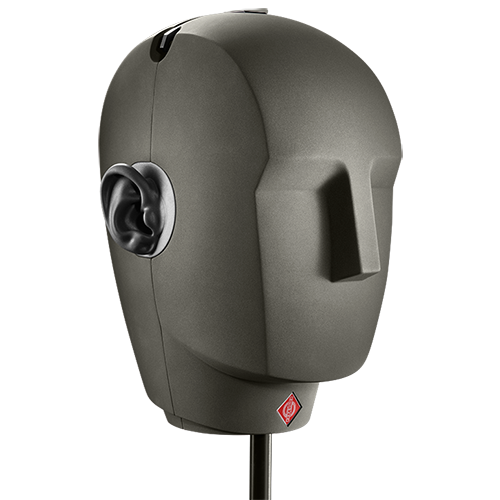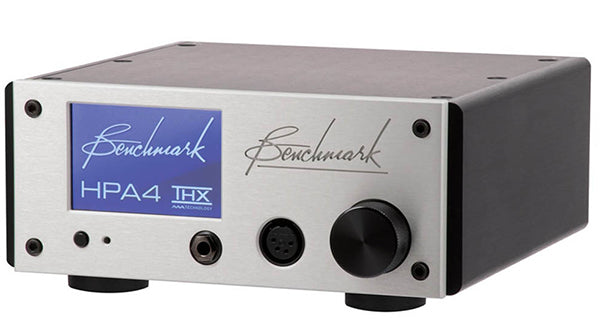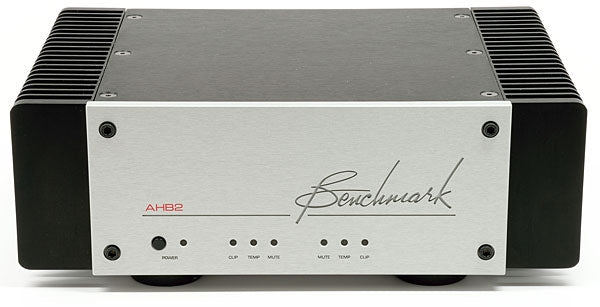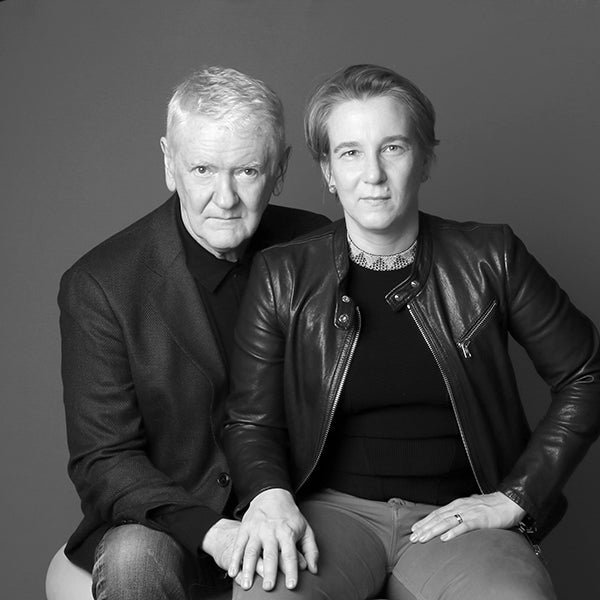With multiple Grammy Award wins and nominations to their credit, as well as European awards such as the Echo Klassik and Le Diamant d’Opera, Jim Anderson and Ulrike Schwarz have a unique personal and professional partnership that has resulted in a wide range of critically-acclaimed, co-produced and co-engineered recordings. Currently, the duo is up for a 2021 Best Immersive Recording Grammy nomination for jazz artist Patricia Barber’s Clique (reviewed by Tom Gibbs in Issue 144). Part One of our interview in Issue 156 included their thoughts on making their mixing techniques as “invisible” as possible, in working with live orchestras and big bands, and discussed their favorite recordings done by each other. Part Two (Issue 157) delved into their earlier work using analog tape, their approaches towards recording unfamiliar instruments and different types of ethnic and regional music, and their transition into digital recording.
Ulrike Schwarz: At this point, I’m regretting that I gave away my Studer A-80 16-track two-inch [analog] machine when I moved to the United States. I’m sure we can find it, though. I know who has it.
But otherwise, I think high-resolution digital is the thing. It’s very stable.
Jim Anderson: The other thing is, we probably couldn’t have done the recordings we’ve done [with the [Stavanger Symphony Orchestra] in Norway, in analog. I mean, the fact that we could actually walk in there with [just] a computer and an interface…if we had to walk in there with a two-inch tape machine and tape – that would have been just impossible. Digital has allowed a lot more portability.
US: Also, immersive audio recording wouldn’t be possible, because our main microphones – we had 13, [plus] we had about 60 additional microphones on stage and all of them were used. You can’t do that with 16 tracks.
John Seetoo: Which artists, living or dead, do you wish you had the opportunity to work with, and why?
US: Leonard Bernstein. Bernstein, but unfortunately, he’s very dead.
JA: We have friends that worked with Bernstein and the stories that are told…even the fellow in the control room having to order lunch was quite a trip. [Engineer] Don Puluse talked about when he was recording the Bernstein Mass and mixing it.
Link to Qobuz: https://open.qobuz.com/album/mapvxh6hcz2mb
Bernstein would order at the 21 Club [the restaurant] and they would bring over lunch on a cart, because Columbia [Records] was around the corner. The story that they don’t tell – well, I think we’re allowed to tell this now, but when the bill came, he didn’t know what to do because he wasn’t used to picking up the bill. (laughs)
In the jazz world, you know who I would love to have worked with? Henry Mancini. My friend Al Schmitt worked with him for years and so I was able to talk to Al about Mr. Mancini. Also, Mr. Mancini is from my area of Pennsylvania, so I grew up following his career. Ulrike’s probably tired of it, but every once in a while, I will pull out a Mancini record and just put it on the record player. Working in Hollywood, on sound stages, recording any of those scores that he did for film – that would have been something I would have liked to have done.
Link to Qobuz: https://open.qobuz.com/album/0886445007404
US: Mr. Bernstein spent most of the ’80s, actually, in Europe, and a lot of time with the Bavarian Radio Symphony. And of course, my colleagues, the older colleagues from radio, had all these stories about their Bernstein recordings and traveling with Bernstein and all these things, and just actually sitting there listening to him in rehearsals, which he’d done for more than over a decade. You learn so much about music, and how these conductors really are. And you’re getting paid for it. Every week was with a major conductor.
Somebody that I would also love to work with, and whom I only had once the opportunity to see in concert – because she usually cancels when I have tickets – is [pianist] Martha Argerich. Of course, I mean, she’s like one of the holy, holy saints to me.
JA: Another person I find fascinating in every aspect is Glenn Gould, both in his solo piano recordings, but also on his radio documentaries for CBC [the Canadian Broadcasting Corporation], The Idea of North and all that kind of thing.
I teach a podcasting class at NYU, and I get the kids to actually listen to Glenn Gould’s radio documentaries. I’m sure he was impossible, his demands and the working methods, but I think the result…
JS: Would you have put his humming on a separate track?
JA: (laughs) The thing is, you don’t have a choice. It’s everywhere, it’s ubiquitous, it’s on every… you know, you just can’t do anything about that.
US: And it’s a very good way to keep people from editing!
JA: Like Gould, Billy Taylor also hummed along when he played and he would try to have us not get his humming in a recording. People work differently when it comes to that kind of thing. I know what you mean by Gould, but if it’s a natural noise [like someone humming], that doesn’t bother me. If it’s an electrical noise, that’s when my ear perks up.

Jim Anderson and Ulrike Schwarz at Skywalker Sound.
JS: What has been your biggest challenge in mixing for immersive audio? In a past interview you mentioned a client that expected elements to magically show up in your mixes, even though they were never actually recorded! Have your Grammy-award-winning reputations in the immersive area magnified these kinds of unrealistic expectations?
US: I think the biggest part is when somebody comes to us and says, “we would like to try for a Grammy nomination…” and this does happen (laughs). I think managing the expectations from the start is one of the most important aspects.
For example, Stavanger [Gisle Kverndokk’s Symphonic Dances, recorded by the Stavanger Symphony Orchestra] was a case like that. And we made it very clear that you can’t [expect a Grammy] on the first…First of all, we can’t go here. Second, not the first time out. The [artist] has to build up a name. And if the music isn’t happening, then it will not get recognized. [Symphonic Dances eventually did garner a Grammy nomination for Best Immersive Audio Album – Ed.]
JA: I think another aspect of what Ulrike is saying is: when you blow this music up into immersive [sound] and it’s coming out of X amount of speakers, the music itself has to be really good, because the bigger you make it, if the music is lame, it just sounds big and lame. So, you really have to have a great musical performance to really put this thing across.
US: In classical music it’s actually more difficult to edit in immersive, because a lot of things you can hide in stereo, and it gets a little more difficult in 5.1. Also, in immersive audio, you have to be really very sure about your edits, so the performance has to be even better, because the editing possibilities are smaller.

Ulrike Schwarz at work.
JA: In immersive, especially in classical music, you can hear these very subtle changes in the “air.” So, you can’t just go plugging in note after note after note. You really have to have a great performance that doesn’t need a lot of surgery applied to it.
JS: You’ve both been working in immersive audio for a long time, and seen its growing pains and development up to its present state of the art. During that time, what breakthroughs along the way made you go, “wow, that sounds wonderful! That’s going to be something I’ll be able to use for the next 20 years.” Or on the other hand where you thought, “I don’t think that’s going to stand the test of time.”
For example, did you think that the dummy heads historically used for binaural (stereo) recording, would now be coming back into use? (Binaural recording involves using two microphones, often with a literal dummy head with microphones placed at its ears. It can be extremely effective in creating the illusion of “3-D” stereo sound and being in the room with the performers.)
JA: The dummy head recording, true binaural recording, is really very effective, especially if you listen to the playback on headphones. [If] you listen to a recording on speakers, not so much. But, if you take the dummy head and put it in the proper placement, [you will hear] a very effective playback. Things have gotten better. A good two-channel binaural recording can be a very effective way of listening to music.
The Neumann KU 100 is actually an excellent microphone system.
US: It costs over $10,000. And we’ve been in two auctions last year trying to actually get one and the prices were outrageous. We didn’t get it, ’cause it was too expensive. So, there you go. We would have loved to have one of them.

Neumann KU 100 microphone and dummy head system.
JA: I did an immersive mix back in, I think, ’98 – and I’m happy it didn’t come out, because it was my first [one]. The reason it didn’t come out was that at the time we didn’t have a format to distribute it. There was no Blu-ray, SACD, 5.1 distribution, [or] any kind of file downloading or anything like that. And so, I got to make some mistakes early, early on that nobody ever got to hear, so I’m very happy for that.
In fact, one of the first things I did in around 2003 was for the FIM [First Impression Music] label. They wanted to record in stereo but also wanted to start working on a 5.1 [mix] and I was trying to figure out a way, as we only had eight channels for recording at the time, using the [Sony] Sonoma system.
Link to AllMusic information: https://www.allmusic.com/album/autumn-yearning-fantasia-mw0000322688
I talked to [mastering engineer] Paul Stubblebine. And I said, “you know, if I get you a good left and right [channel], and then if I print stems [a grouped collection of audio sources, such as a drum track – Ed.], or elements that could be put into the center channel and put into the rear, from that mix – would you mind if we did that? Kind of combining in 5.1 at that time?” I was trying to get a good anchor of a left and right [channel mix]. And then, okay, how can we now fill this out? That’s sort of how I came to work in surround originally.
We presented that at the 2003 Audio Engineering Society (AES) Conference in Banff.
Paul was there. We showed our recording with a huge stereo and surround [system]. It was almost like a 1959 stereo demonstration, but we were going not from mono to stereo, but from stereo to 5.1. So, that was kind of a way to start. And then we kind of kept working at it. We graduated from 5.1 to 7.1 to 11.1. And now we’ve been doing mapping into Dolby Atmos. We’ve been finding that to be a successful way to work.
US: My genesis is a little different, because when I started at Bavarian Radio, they were already doing 5.1. So, orchestral recordings and orchestral broadcasts were in stereo and 5.1. They sent me to Japan to learn from the Japanese NHK people, who were far advanced in that, because they were already doing 5.1 all the time, and in 2006 had already developed what is now their standard of 22.2 three-dimensional recording.
In 2006, that was the first time it was presented to me, and that just blew me away, because it came with 8K video. It was just, it was just amazing. And I was able to learn from them. So, I think from 2006 on, I was doing 5.1.
In 2010, we were invited to go to the upcoming [AES] Spatial Audio conference, the successor of the 2003 Banff conference.
Three weeks before that I did my first 9.1 recording with Simon Rattle conducting a Schumann oratorio. And I could track it in 9.1, but of course, I could never mix [it] in Germany or at Bavarian Radio; I couldn’t play it back. So, I flew to Tokyo to mix it there to present it a few days later in Tokyo. The fascinating thing that I experienced [in] going from 5.1 to 3-D was that the [sonic] transparency was even better, and you could make things “float.” At that moment, I didn’t know what I was doing. But somehow, I had placed my height [channel] microphones near the choir. And so, all of a sudden, I had this third dimension where the choir started to go up in height. I had the orchestra and the soloist, and then the choir was just floating on top of it. It was an effect that I hadn’t counted on, but I really loved. All of that came very, very early. And so, developing this to what it is now has been just some fun, but we’ve [also] done it for a rather long time.
Ulrike noted: The recording was Robert Schumann, Das Paradies und die Peri, performed by the Bavarian Radio Symphony Orchestra and Choir (Symphonieorchester und Chor des Bayerischen Rundfunks). The recording and stereo and 5.1 broadcast took place in September 2010.
Sir Simon Rattle was the conductor. The soloists were: alto Magdalena Kožená (Angel), sopranos Sally Matthews (Peri) and Kate Royal (Maiden), tenors Topi Lehtipuu (narrator) and Andrew Staples, and baritone David Wilson-Johnson. The immersive version was a 5.1.4 recording that I mixed at Nippon Hoso Kyokai (NHK) Research and Development Laboratories in Tokyo in October 2010. The recording was presented at the 40th AES Conference for Spatial Audio October 8 – 10, 2010 in Tokyo.
Sir Simon Rattle was, at the [time] of the recording, chief conductor of the Berlin Philharmonic Orchestra and with the label EMI exclusively. It wasn’t possible to release this as a CD. Now that Sir Simon has been appointed chief conductor of the Bavarian Radio Symphony Orchestra, the hopes to release this recording on the BR-Klassik label are high.)
JS: This question is for the Copper audiophile audience. Do you share, or do you have separate reference personal music listening systems at home? What do the components consist of?
JA: Ulrike always likes to say: “In this household, we have at least five subwoofers.” We’re sitting in the dining room right now, and we’re surrounded with a 5.1 system [where] we can listen to CDs, and SACDs and Blu-rays in 5.1. It’s a Marantz SR 6014 multi-channel amplifier with Eclipse main speakers plus an Eclipse TD725SW MKII subwoofer and a Sony UBP-X700 multiplayer. In the living room is a system I’ve had for a very long time, which [includes the] Wilson WATT/Puppy speakers and subwoofer with a Mark Levinson amp and preamp – the No. 23/25 combination or something like that. Plus, a Linn LP12 [turntable].
And there’s an Oppo UDP-205 [Blu-ray player] down here. Upstairs is where the TV is, [with] an Oppo UDP-203 [Blu-ray player and a] Yamaha Atmos soundbar with a subwoofer. Ulrike’s mastering room has Wilson CUB loudspeakers…
US: …Assisted by an Eclipse TD725SW MKII subwoofer, and I have Benchmark AHB2 monoblocks with the HPA-4 preamp and, well, my DAW [digital audio workstation]. While I have [an] iFi Diablo [DAC], usually I work with Merging [Technologies pro audio hardware].

Benchmark HPA4 headphone/line preamplifier.
JA: Since the pandemic started, we haven’t had a living room, so the Wilson system also sits next to our mixing system, a stereo mixing system which has Meyer HD1 [monitor speakers], and then with the Merging system I have…
US: …A little Millennia mixing board…
JA: …Plus the Avid S1 mixing system – a couple of those, so I have faders I can actually mix on.
And then, we have the Capitol Chambers [Universal Audio software plug-in version of Capitol Studios’ famous echo chambers] available to us, which is really quite wonderful. So, we can [do] mixing here. In fact, we actually mixed White Lotus with Min Xiao-Fen in the living room. It’s also recorded in super-high-resolution. And frankly, to me, it’s every bit as good as anything I’ve ever been able to turn out of a New York studio, which is enlightening and depressing at the same time, because I love working in New York studios.
US: We actually went a little wild – we have all custom-made cables; all AccuSound cables. We installed power [conditioners] and exchanged [the stock power] cables…
JA: …for MusicCords from Essential Sound Products.
US: So, actually, there is less noise [in the setup] because the cables are much shorter. It’s not like they have to run through patch bays [in a recording studio] and everything. And so, it is depressingly good what you can come up with. But I also love to go out to big studios…what was the second part of the question? What if we had unlimited budgets and unlimited space at home?
We both love the B&W 802 [loudspeakers]. The old B&W 802s that they have at Skywalker [Sound], I would love to have them at home. Alternatively, the Magicos – I’ve fallen in love with those. Wouldn’t those sound nice in Brooklyn?
JA: I think it’s the S5. [Currently the Magico S5 Mk II – Ed.]

Magico S5 Mk II loudspeakers.
US: We like those a lot. If we could stack them with the Merging Technologies clock [the MERGING+CLOCK] and their whole MERGING+PLAYER system, that will be another nice addition in terms of, you know, getting their “super clock,” which, in the meantime, we have purchased..
I was in the market for tube amps from McIntosh, but I needed them for work. So that’s why I went to the Benchmark [amplifiers], because the [amps I needed] had to be super precise. The McIntosh didn’t give me what I needed there.

Benchmark AHB2 power amplifier.
JA: Yeah, it’s funny in that what we require professionally is different from what we require for listening as audiophiles.
JS: Don’t you need flat response when you’re working?
JA: Well, yes, flat and accurate and precise and very, very fast. We found the McIntosh amps to be very nice, but also a little bit slow and very forgiving and, frankly, we don’t need that. We need to hear something that’s…
US: …That’s giving it up to us straight, you know?
JA: We need something that’s gonna tell us [a recording] is not very good. That’s one reason why I like the Meyer HD1s there; they are not “musical” speakers.
I always find myself saying, if I can work with the HD-1’s and get the mix to the point where I can tolerate it, then it’s going to be a pretty good mix. That then will translate [with] just about any work.
We discovered the B & W 802s during the last three or four projects with Patricia Barber while mixing at Skywalker. And I’ve really come to like those a lot. At Skywalker, you’re [there] for a long time, 12 hours a day at a minimum. And I find the 802’s not to be fatiguing; they’re very, very easy to listen to for a very long period of time.
US: Our main mixing setup at home in Brooklyn is based on Merging Technologies components from their professional line. For mixing, we use an MT Horus AD/DA interface that is connected via LAN to the computer with MT Pyramix software. This enables us to work in resolutions like DXD, 384 kHz, and/or DSD. The digital controllers are, at the moment, several Avid S1s. Stems and outboard gear (if needed) will be summed on an analog Millennia Mixing Suite and re-recorded to Pyramix.
This system can run in stereo, 5.1, or immersive (meaning 3D audio, 5.1.4, 7.1.4, and up to 22.2 formats). After the latest upgrade, we are also capable of creating our own Dolby Atmos files.
The speaker system in our house only allows for 7.1 playback at the moment. For more elaborate mixing and playback scenarios, we like to travel to Skywalker Sound for their excellent control room acoustics.
Part Four will continue with Jim’s and Ulrike’s perspectives on studio monitor loudspeakers; the differences they have observed between listening to music as producer/engineers versus as audiophiles; their extensive work with Patricia Barber; Jim’s tenure as president of AES; and the future applications of immersive audio in gaming and other media.



